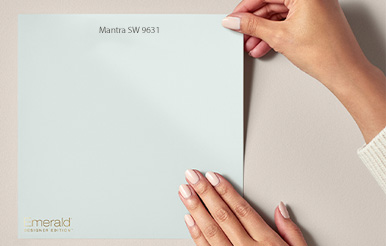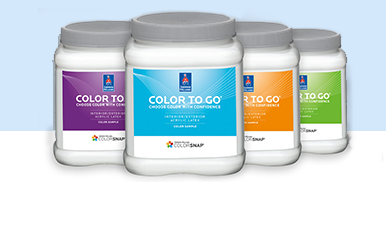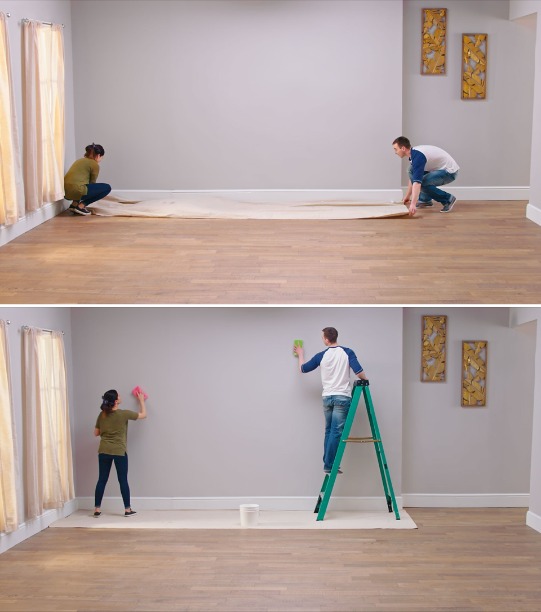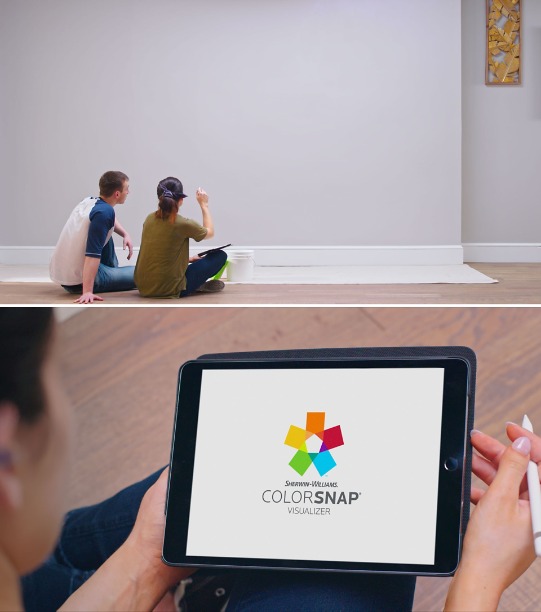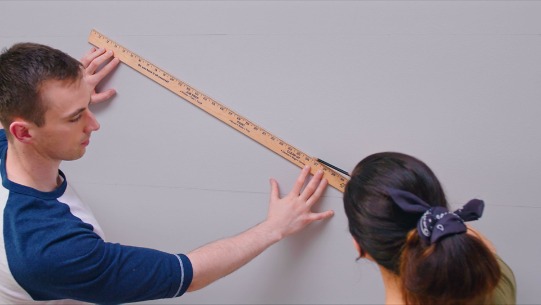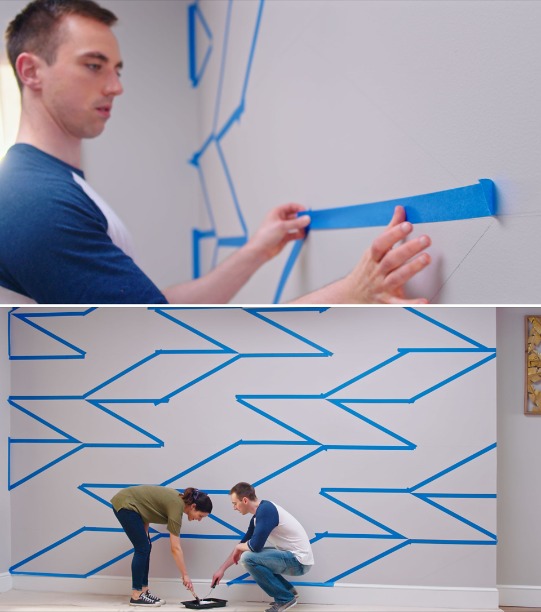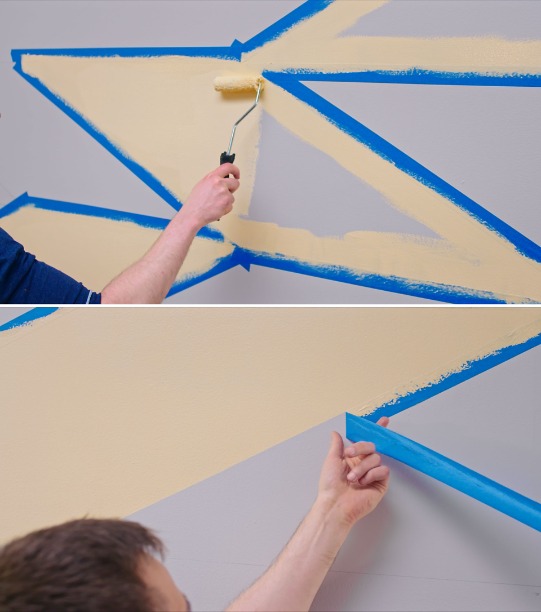-
1
Prep
Using a cloth or cellulose sponge dampened with water and a little mild dishwashing liquid, wipe down the wall(s) to be painted to remove dust and dirt. Rinse the walls with clean water to remove soap residue.
Patch holes as needed. Scuff sand, then clean off dust.
Place painter’s tape around the edges of the ceiling, windows, doors, floor trim, and any other woodwork or trim that is not being painted.
-
2
Plan
Decide on the geometric pattern you want on your wall. Some popular options are herringbone, chevron, hexagon, harlequin, and trellis.
Measure height of wall to determine number of rows in pattern. (Our wall height was 96”. We divided by 6 rows which gave us a row height of 16”).
Now measure width of wall to determine length of each shape in pattern. (Our wall was 174” wide. We divided by 6 to give us a shape width of 29”).
Plan out your color pattern. Use Sherwin-Williams ColorSnap visualizer (on web, mobile or iPad) to explore colors and find coordinating colors.
-
3
Measure
Use a tape measure or ruler and pencil to lightly mark your design on your wall.
-
4
Tape
We recommend starting with your lightest color first.
Use painter’s tape to tape off the outside border of the shapes for your first color.
Tip: For getting straight lines: Let the tape guide you. Don’t pull on it. Try and force straight lines. Keep it a bit loose and just smooth it down lightly with your hand as you go.
-
5
Paint
Starting with the lightest color, first use a paintbrush to carefully paint the edges of the shapes closest to the tape.
Use a roller to fill in the shape (The roller will help keep a consistent texture to the wall).
Remove the tape at a backwards 45° angle while the paint is still tacky.
Let dry for four hours.
-
6
Repeat Steps for Second Color
Use the painter’s tape to tape off the outside border of the shapes for your second color.
-
7
Paint Second Color
Use a paintbrush to paint the edges of the shapes closest to the tape.
Finish with a paint roller to fill in the shape.
Remove the tape at a backwards 45° angle while the paint is still tacky.
- Time
- Weekend
- Cost
- Medium
- Difficulty
- Advanced



